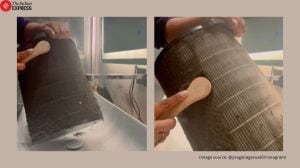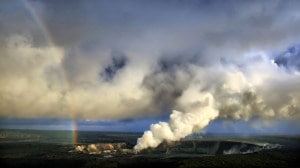Old debate,fresh steam
The announcement that two reactors at an earthquake-damaged nuclear plant could be suffering meltdowns feeds into a resurgence of doubts about nuclear energys safety.
Norimitsu Onishi,Henry Fountain and Tom Zeller Jr
The announcement that two reactors at an earthquake-damaged nuclear plant could be suffering meltdowns feeds into a resurgence of doubts about nuclear energys safety even as it has gained credence as a source of clean energy in a time of mounting concerns about the environmental and public health tolls of fossil fuels.
The crisis stems from failures of the cooling systems at the reactors at the 40-year-old Fukushima Daiichi Nuclear Power Station. At a nearby nuclear plant,Daini,too,reactors lost their cooling systems,and Japanese officials were scrambling to determine whether the systems could be revived or would also need injections of seawater.
Critics of nuclear energy have long questioned the viability of nuclear power in earthquake-prone regions like Japan. Reactors have been designed with such concerns in mind,but preliminary assessments of the Fukushima Daiichi accidents suggested that too little attention was paid to the threat of tsunami. It appeared that the reactors withstood the powerful earthquake,but the ocean waves damaged generators and backup systems,harming the ability to cool the reactors.
It was not until Sunday that the increasingly dangerous nature of the problems at Daiichi became clear. But even on Saturday,with Reactor No. 1 having suffered a radiation leak and an explosion,James M Acton of the Carnegie Endowment for International Peace said the nuclear industry would be shaken. Decades ago,after the Chernobyl and Three Mile Island accidents,Acton said,the nuclear industry tried to argue that newer reactors incorporated better safety features. That made very little difference to the public, he said. Japans status as the only target of nuclear attack adds to the publics sensitivity.
In 2007,an earthquake caused a fire and minor radiation leaks at the worlds largest nuclear plant,in Kashiwazaki City. Investigation found that Tokyo Electric had unknowingly built the facility directly on top of an active seismic fault. A series of later fires deepened the publics fear. But Tokyo Electric said it upgraded the facility and reopened in 2009. Last year,the Monju Prototype Fast Breeder Reactor was allowed to reopen,14 years after a fire shut it down.
Nuclear advocates argued Daiichis problems were singular in many ways and stemmed from a natural disaster on a scale never before experienced in Japan. Some said there might have been missteps in handling the reactor. A quick alternative source of water for cooling the core should have been immediately available,said Nils J Diaz,who had led the US Nuclear Regulatory Commission.
Diaz suggested the authorities might have acted too slowly,including procedures that might have required venting of small amounts of radiation,rather than risk a wholesale meltdown. Fear over public reaction may have delayed plant operators from acting as quickly as they might have,he said.
They would rather wait and do things in a perfect manner instead of doing it as good as it needs to be now, Diaz said. And this search for perfection has often led to people sometimes hiding things or waiting too long to do things.






- 01
- 02
- 03
- 04
- 05

























